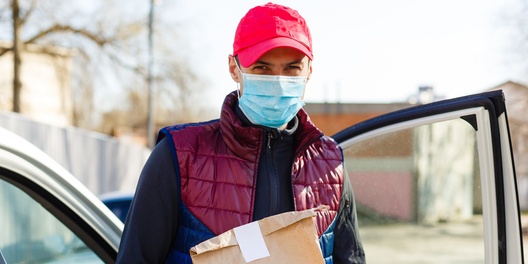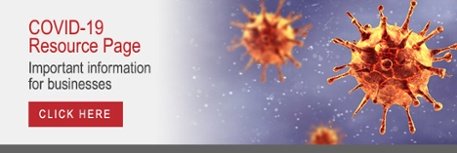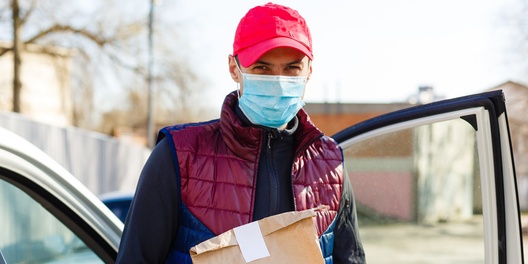
As we all continue to adjust to this strange new world, it can be challenging to think about the future. It may seem difficult to imagine a world where COVID-19 doesn't dominate headlines and impact our day-to-day lives. But the coronavirus will end. Eventually, social distancing guidelines will lift, and we, as a nation and as a globe, will push forward into the wonderful, amazing, and completely unknown future.
However, the effects that this pandemic leaves won't disappear overnight. Consumers' behaviors, preferences, and engagement methods are changing. Whether your business has closed its doors, furloughed employees, or is still operating at full steam, you need to be planning for the future of "normal" post-pandemic.
Understanding Shifting Buying Habits
[COVID-19] has changed the course of human culture, at least somewhat. We will need to change our strategies to adjust for a new normal. — Thomas Bittman, Gartner
Early reports show that 85% of Americans changed their buying habits before social distancing guidelines were solidified broadly. Today, there is an obvious change in consumer habits fueled by closures and local legislation. Online shopping has exploded across virtually every sector, and consumers are reducing spending on non-essential items almost universally.
Consumers are forming habits fueled by COVID-19. During this period of intense activity, these habits start to solidify. For the same reason that online shopping has grown year-over-year as more consumers become comfortable with digital shopping during holiday seasons, it will grow as consumers become more accustomed to online shopping due to the pandemic.
In fact, COVID-19 has forced many consumers (particularly in the older age brackets) who typically shy away from digital shopping to learn and discover the value in online shopping. Once they're familiar with this shopping method, many of them will continue to leverage it as their primary method of product and service consumption.
In addition to online shopping, businesses need to think about how COVID-19 has changed their supply chain connections. You may have to reforge relationships with vendors and renegotiate contracts. As workers continue to leave jobs due to financial restraints and social distancing guidelines, automation may also play a pivotal role in your business revival. You're in the perfect position to rethink core strategies and implement the critical technology that could help you sustain your business going forward.
Using models like the lean-focused Business Model Canvas can help you break down your business model in segments to identify where there are opportunities for growth and how you can adjust to shifting consumer buying habits. You need to think about:
- How has your value proposition changed?
- Has your core audience shifted?
- What are your distribution and sales channels looking like?
- How will these changes impact your customer relationships?
- Is your cost structure different than it was before the pandemic?
Start adjusting your business model early to gain momentum once the guidelines lift.
Focus on Your Survival Budget
Obviously, things are strange right now for most businesses— especially in the budgetary area. You need to re-evaluate your budget in light of changes to both your business model and your overall revenue streams during this period.
There are a few government assistance programs that can help you stay afloat during the actual pandemic. Recent COVID-19 legislation such as the “Families First Coronavirus Response Act” as well as the CARES Act offers small businesses (under 500 employees) a $10,000 advance on an Emergency Economic Injury Disaster Loan (EIDL). In total, businesses can tap into $200,000 in disaster loan relief through EIDLs. The Paycheck Protection Program offers up to $10 million for businesses that keep employees on payroll, and the loan can be fully forgiven as long as employees are not fired and their wages aren't reduced over 25%.
All of these are things that your business should be immediately checking into. Government assistance can help your business stay afloat during this awkward time, and it can certainly help position you for a strong comeback once the quarantines are lifted.
Stay Connected to People
The economy is going to recover. Whether that's a V-curve recovery that's quick and painless or a slower, more gradual recovery, this will end. And when it does, you need to be prepared. Having a solid business model strategy and money in the bank is a great way to get started, but you can't forget about people.
Check-in with past clients. They may have dropped you due to the financial restraints of COVID-19, but once the restrictions lift, you want to be close to them in order to win them back. Keep tabs on them and connect with them occasionally on a personal level.
Once we go back to the new normal, the floodgates will open. Every business is going to be hunting for new blood. Keep your past clients close. Otherwise, they're going to jump ship and move to another business. In fact, now is the perfect time to think about new business.
Most clients aren't buying. But that doesn't mean that they won't be buying. This is all temporary. You want a healthy stream of leads ready-to-go once the restrictions are lifted. It will give you a head start on the competition.
Create a Pandemic Response Team
Pandemic response teams have two purposes:
- Creating pandemic response and preparedness guidelines to help your business function optimally during and after COVID-19
- Laying the groundwork for future pandemic responses to help your business stay alert and prepared for any upcoming disasters
In particular, the first role is critical. Pandemics aren't your typical business disruption. They last for months, shift consumer behaviors, and rapidly upheave once-solid business practices. You have to come together with your team and tackle them from the organizational level to the micro-level.
A pandemic response team is responsible for handling the policies and guidelines that you will follow during the pandemic, and, ideally, they should have policies in place for once the pandemic lifts. This should be a cross-organizational function that involves C-level and HR. Now is the perfect time to reach out to your outsourced HR partner to help you create the framework for pandemic response and help you adjust your HR administrative duties to this new normal.
There's Light at the End of the Tunnel
People will start buying again. The way they purchase and consume may change, but the core drive to consume isn't going to end. Businesses that have the right strategies in place once the floodgates open are poised to enter the new economy strong and vibrant.
Even if your business is currently closed, you need to hit the books and start figuring out how you're going to adjust to the "new normal" once quarantines end. Many businesses will survive the pandemic. But only a few are going to be prepared enough to thrive after this is all over.

